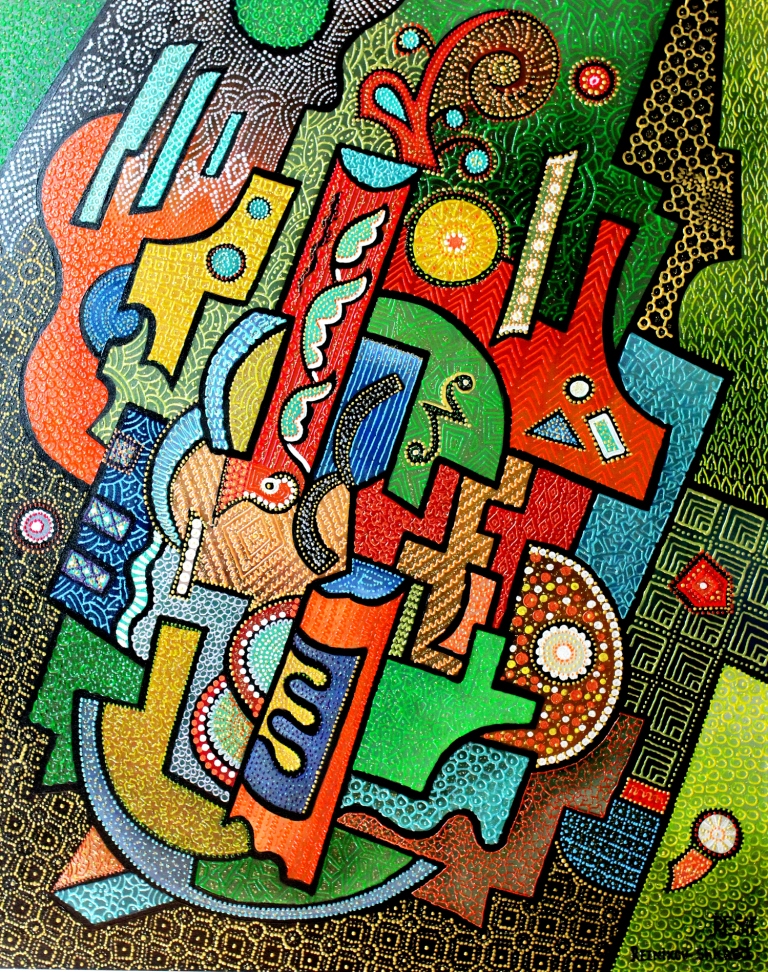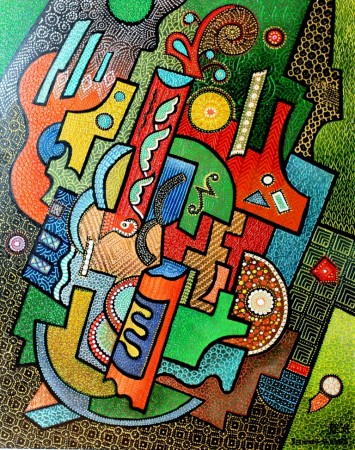Geometric style.
Geometric style (also known as the Geometric) was characteristic of Greek vase painting at the end of “dark ages” of about 900-700 years. BC. e. and drove protogeometrichesky style. Centre spread this style was Athens. Gradually, it spread in commercial cities on the islands of the Aegean Sea.
In addition vase painting style was typical of small plastic, glyptic and decorative arts, and at the same time marking a period of classical antiquity in ancient Greece. A geometric pattern that appeared in the IX. BC. e., represented themselves a combination of geometric elements, it was located on vases and formed bands of meanders, crosses and circles. In this style, it captures the essence of ancient Greek art and religion. In addition to the ornamental friezes were extended curly image became the prototype of friezes depicting animals and people in the Archaic period. Ornament of 80 per cent of painting geometric style.
In the century after Homer 750 BC. e. strictly geometric friezes direction is replaced with images of fantastic beasts of prey. On vases began to depict scenes of myths.
1. Overview of geometric vase painting
1.1. Protogeometrichesky period
Although protogeometrichesky Style (1050-900 years. BC. E.) Is a cultural revival compared to the previous submikenskoy ceramics tradition of Mycenaean ceramics were lost. The form of the vessels was the strict and easy (unlike the sinuous forms characteristic of Mycenaean ceramics). Protogeometricheskie vessels divided into several horizontal decorative strips, which are placed in simple geometric elements, generally concentric circles or semicircles.
1.2. Early geometric period
The Early geometric period (900-850 gg. BC. E.) To increase the height of vessels, while the ornament was located just around the neck until the middle of the vessel body. The remaining surface is covered with a thin layer of clay that upon firing acquired dark shiny metallic shade. In the same period to the decorative elements of the ceramics added meander, which became one of the most characteristic elements of geometric art.
1.3. The geometric mean period
The average geometric period (850-760 gg. BC. E.) Increases the number of zones in the decorative pot, ornaments prevails among meander.
1.4. Late Geometric period
Although technology geometric mean period continued to be used at the beginning of the VIII century BC. e., some manufacturers have increased the number of decorative elements on the vessels become resistant forms of animals in the area of the neck and the base of amphorae. There are stylized human images.
One of the best examples is the oldest style pozdnegeometricheskogo signed Greek vessel – the work of the potter or Aristonota Aristonofa (VII century BC. E.). Amphora found in the Italian city of Cerveteri, it depicts the blinding of Polyphemus by Odysseus and his companions. Since the middle of the VIII century BC. e. closer contacts between Greece and the East Greek vase painting enriched with new elements – such as lions, panthers, legendary creature, sockets, palm trees, lotus flowers, etc., which later evolved into the Orientalizing period.
2. Geometric motifs in art
For vessels in the geometric style harakorizontalnye stripes running rings around the vessel. Between these strips are placed a variety of decorative motifs such as zigzag, triangle, square and swastika. Along with abstract elements appear stylized images of people and animals that distinguishes the geometric art from protogeometricheskogo. Many of the surviving objects Geometric period – a funerary gifts in the graves of aristocrats.
3. Human Image
The first human images appear around 770 BC. e. on the handles of amphorae, which depicts a male figure with a triangular torso, oval head with a projection instead of a nose and long cylindrical thighs and shins. Female figures and abstract: their long hair portrayed as a series of lines, but the breast – like strokes at the armpits

